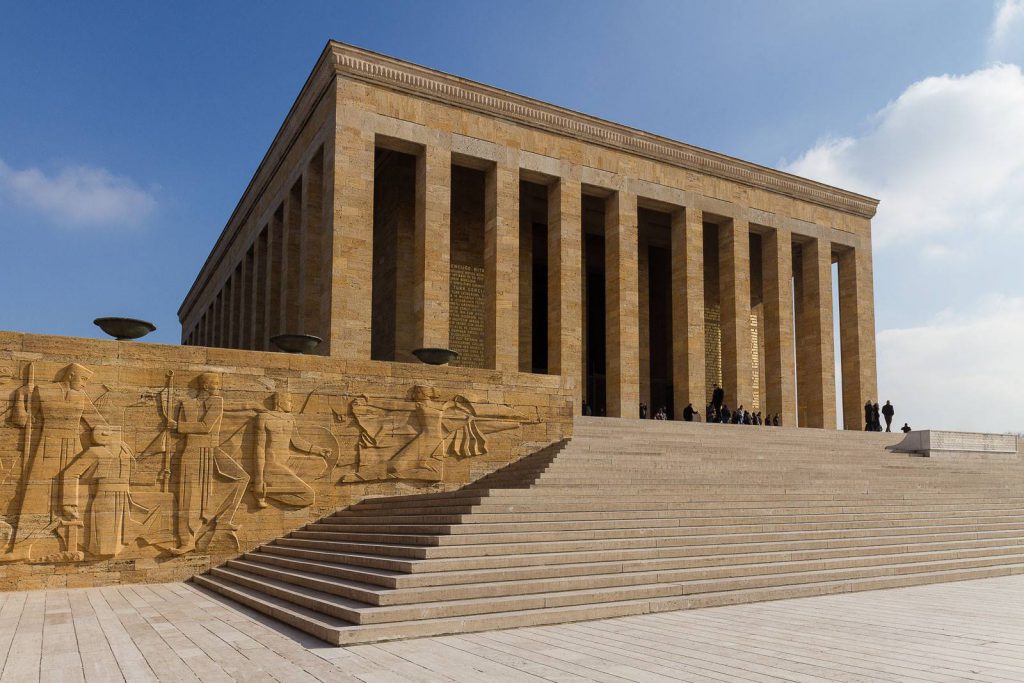In addition to being the bridge that separates two great continents – Asia and Europe – Turkey is also chockfull of friendly people, ready to share their wondrous attractions with you.
If ancient sites aren’t your cup of tea, you can while away an entire holiday lounging around on Turkey’s golden shores. And of course, the food is exquisite. You can, of course, sample the classic kebab, but if you’re feeling daring, there’s plenty of traditional dishes to excite your tastebuds.
Greasy, stuffed intestines, a dessert made out of chicken, and the sweet, yet salty ‘watermelon and feta cheese’. These are all dishes guaranteed to pique your interest, if not your appetite.
Turkey even offers plenty of top-notch ski resorts waiting for those who visit at the right time.
Few places compare to this country of wonders, however; certain gems shine brighter than others, and those are the ones we’ll be looking at today.
10. Ephesus
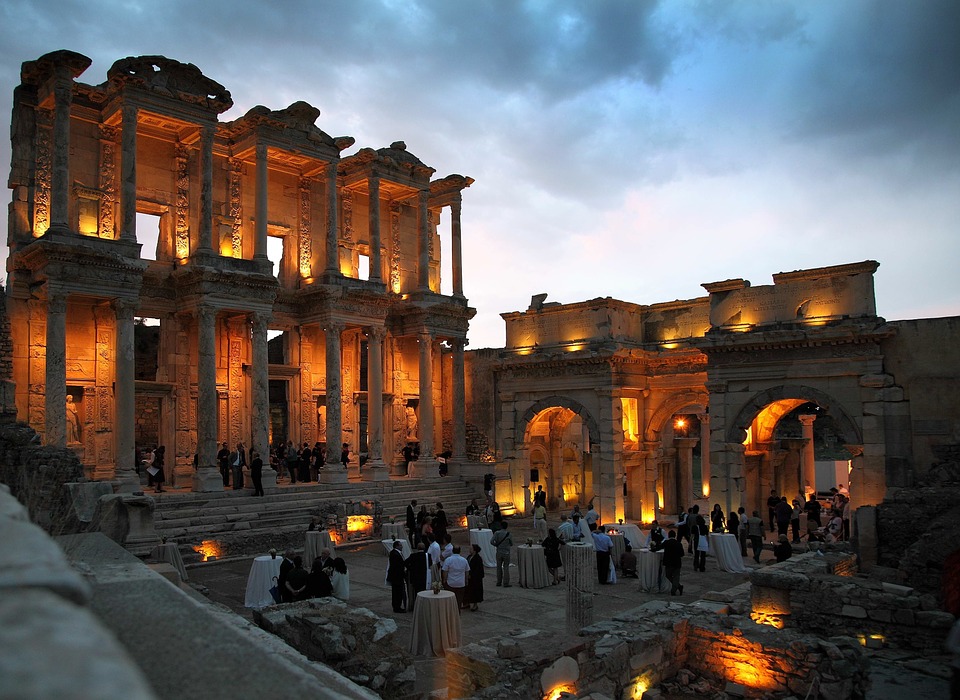
Remnants from as far back as the Bronze age have been found where the ruins of this ancient city now sit. Over the course of its vast history, Ephesus was occupied by the Greeks, Persians, Romans, Byzantines, and the Ottomans. Each of these cultures left a little piece of themselves behind, turning the cities ruined state into an architectural marvel. Although, for some ruins, Ephesus is remarkably well preserved.
Many agree that Ephesus is the best place in the Mediterranean to gain an understanding of what life in antiquity was like. During its heyday, this bustling port city was home to the cult of Cybele – the Anatolian fertility goddess. The sea has since receded more than four kilometres, and the cult of Cybele is lost to time.
Other Gods were also worshipped here, although most of their altars have crumbled. One of these altars just happens to have been of particular importance; The Temple of Artemis; one of the seven wonders of the world.
As glorious as this marble Temple was, it was destroyed by a mad man named Herostratus. His reason for ruining something so glorious? He wanted to be remembered.
He was quickly ‘done away with’ and it was made illegal to mutter his name, under the penalty of death.
As is often the case, his name still lives on, while the judges who sentenced him have long since been forgotten. We get the phrase “Herostratic fame” from this lunatic. If you are willing to do anything to be remembered, then you are said to be seeking Herostratic fame.
Nowadays, only a few pillars remain to mark the once great structure, which might be sadder than if it had been destroyed completely. It’s not just a bunch of ‘old stones’ for history buffs to fawn over though. Ephesus also played an essential role in the spread of Christianity.
Ephesus’ Christian Past
Beginning in the 1st Century AD, famous Christians such as Saint John and Saint Paul visited the cults of Artemis. Unsurprisingly, he rebuked the cult and their peculiar faith.
Naturally, Christianity was met with some resistance. Saint Paul was adamant that he was going to convert them though, and he did. From there, Christianity sailed across the globe – there are few better places to spread religion than from than the most important trading center in the Mediterranean region
It’s also believed that Mother Mary spent her final years in Ephesus with Saint John, and you can still visit their house today. As if that wasn’t enough, Ephesus also has the honor of being referenced multiple times in the new testament.
Some of the city remains almost fully intact, from the public bathroom to the grand Celsus Library. There’s even an ancient piece of advertising; a footprint, pointing sailors toward the brothel. One story goes that if your foot was smaller than the footprint, you could not gain admission. It is a very small footprint indeed.
If all this sounds good, then great – we have done our job! There are a few tips you need to keep in mind while visiting Ephesus though;
- Don’t visit during the summer holidays
Nothing ruins immersion quite like bawling babies and selfie sticks. Coming later in the season will help you avoid the oppressive heat, as well as the crowds.
- Have a way of hydrating
If you can, we recommend sticking a large bottle of water in the freezer the night before you set off.
Not only is Ephesus wide open, but the smooth stone maintains heat well – this, combined with the naturally hot climate, causes water to heat up incredibly quickly. Of course, you can purchase water on site, but only if you’re willing to lose all your Lira.
- Dress Appropriately
Proper clothing might seem obvious, but many overlook it.
This touristic hotspot offers little shade, so a hat is a must. You’ll also want a breathable t-shirt and lots of sunscreen.
There will also be plenty of walking involved. You don’t want to have to clamber up those big, ancient steps in flimsy sandals, do you?
9. Cappadocia

No matter who you are, you can’t deny that Cappadocia is one of Turkey’s top 10 attractions. These unusual rock formations seem plucked straight out of a Fairytale – so much so, that they are known as “The Fairy Chimnies.”
Like Pamukkale – another remarkable landmark on this list – we have the earth’s subterranean heat to thank for Cappadocia. The stalagmite-like chunks of stone are formed out of volcanic eruptions, and have been occupied since 2500 BC! While they are stunning in their own right, it’s taken generations of people carving their personality into them to make it what it is.
It was Christians that did most of the heavy lifting, after realizing how easy the stone was to craft. Before long, they had settled beneath the ground, and within the chimneys themselves.
Nowadays, the Fairy Chimneys offer an airy respite from the barren waste that surrounds them. There’s even a hotel built into the stone! Those standing upon the balconies of this hotel come sunrise are in for a treat.
Each morning, hot air balloons set out on their course over the rose-hued Fairy Chimneys. The colourful balloons bobbing lazily above the stone spires creates an image that stays with people forever.
The only thing that might top the view from the hotel is hopping into a balloon yourself. From the sky, you can truly appreciate the rustic charm that the chimneys have to offer.
Hopping into the basket of one of these balloons should definitely be on your bucket list. Don’t let a fear of heights stop you either, as there’s no real sense of motion. Everything is slow and calming.
Besides, you’ll likely to be too distracted by the stunning dream-like world below to really worry about falling.
8. Hagia Sophia
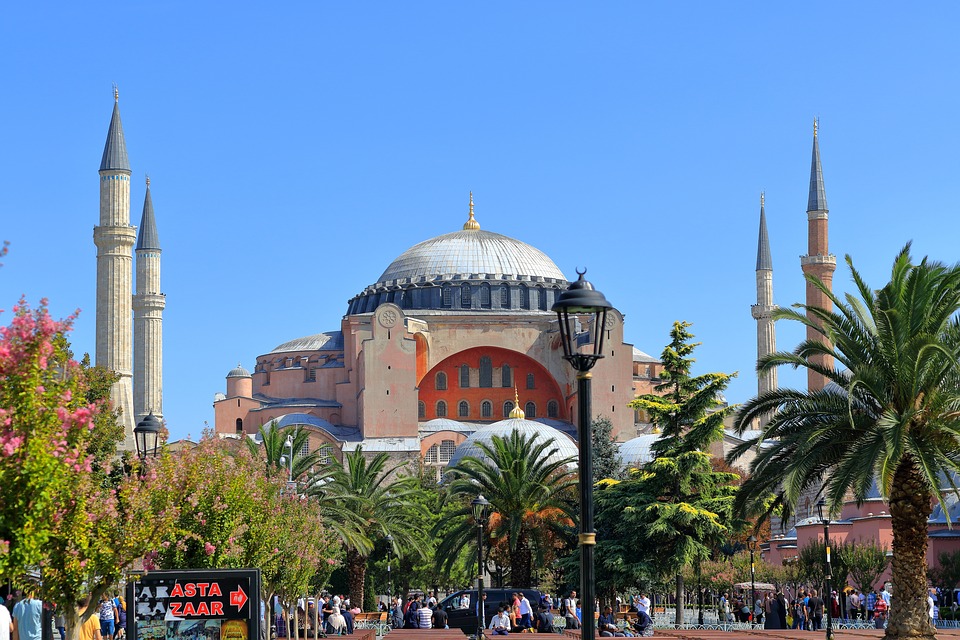
Hagia Sophia is a wonderful two in one Cathedral and mosque. It also happens to be one of Istanbul’s top attractions.
After starting life as a church, the Hagia Sophia later transitioned into a mosque, before becoming a museum in its old age. And old it is! At 1483, it is one of the longest standing buildings in the world.
As brilliant as Hagia Sophia’s exterior is, it’s what’s inside that counts. Thirty million gold mosaic tiles cover the interior of the dome, along with painstakingly crafted Islamic inscriptions. As it is now a museum, you will be able to get a close up look at some ancient jewelry too!
Keep in mind that although the Hagia Sophia is close to restaurants and bathrooms, there are none on the inside.
7. Mount Nemrut
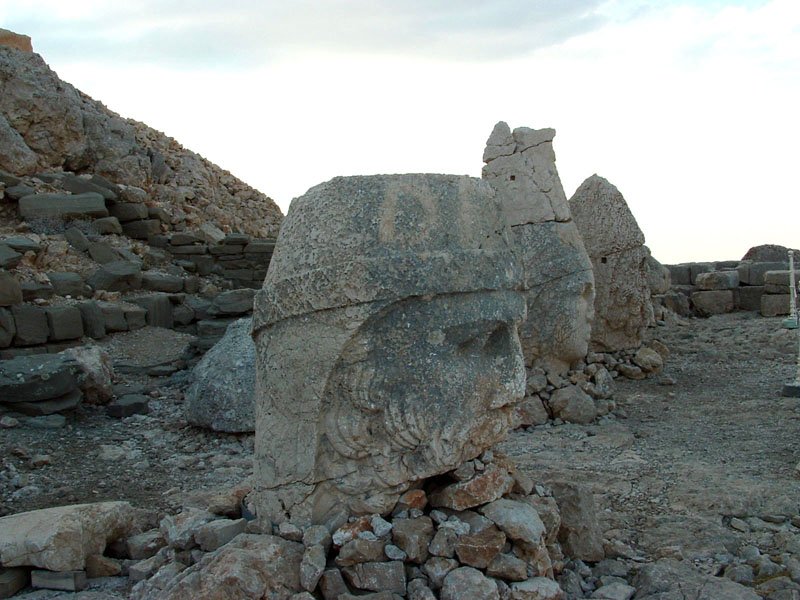
This ancient funerary mound is arguably the top attraction of Eastern Turkey. The ruined remnants of once colossal statues guard this hauntingly lonely archaeological site.
Huge stone heads of what was likely forgotten gods stare out from the cliff face. Seeing such detailed and intact faces all alone on the windy mountaintop truly adds an eerie quality to the place.
You’ll want to head up Mount Nemrut during the early hours of the morning for the best view. Waiting for the silhouettes of the heads to gradually come into view as the sun rises is an almost meditative experience.
6. The Grand Bazaar
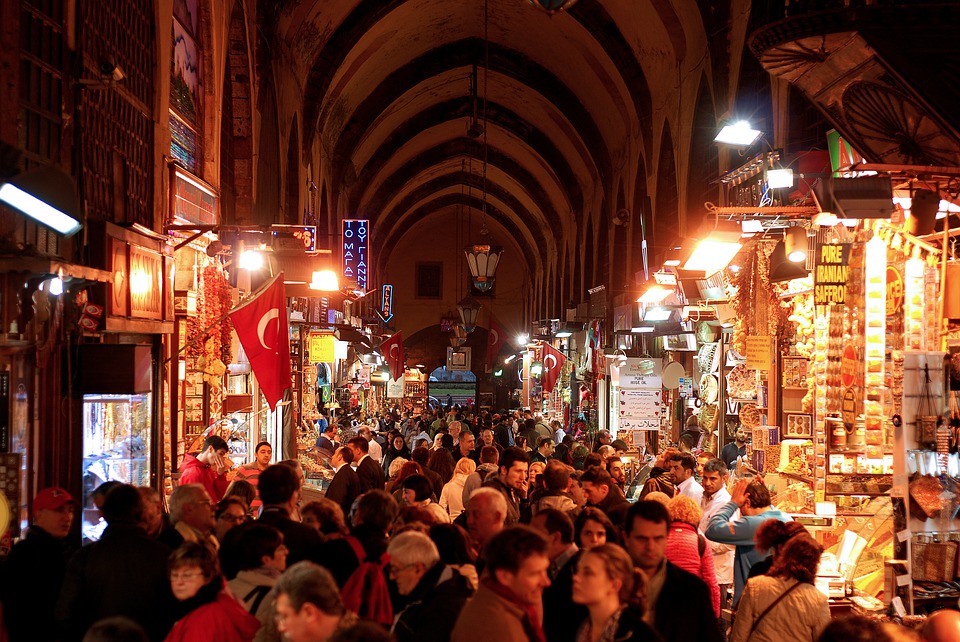
Since the first stall was erected here, the Grand Bazaar has grown to be one of the oldest and largest markets ever. It’s so old, in fact, that it recently celebrated its 550th birthday!
To a western shopper, the way that stores are laid out in the Grand Bazaar might seem baffling. Each street is named after the items that can be found there – for instance, if you were to visit Halıcılar Caddesi, or “Carpet Street” you can expect to see a large assortment of woven goods.
Looking for a looking glass? Then “Mirror Street” is the place you want to be. There’s even a street named “Keseciler Caddesi,” a “Kese” being the exfoliating cloth used in Turkish baths.
As mentioned, the way The Grand Bazaar jams all its stores into one street can seem odd. After all, why would vendors want to drive up the competition? The reason is simple; if someone needs something, they know precisely where to get it.
Salespeople in The Grand Bazaar – and indeed in Turkey – enjoy making a show of the sales process. They will peacock their finest silks in an attempt to draw you in. And, with every similar shop within close proximity, bargaining becomes a breeze for you.
Here’s a quick tip; Head into a store, spend a couple of minutes looking around – so that you don’t seem desperate – then ask for the price.
No matter what the salesperson says, raise your eyebrows in shock, smile, and slowly head for the door. Make sure to thank them, and if they still haven’t gotten the message, go to step two;
State that you expected the price to be a little lower while shooting glances at other nearby shops. With so many other vendors nearby, they won’t want to lose you.
You could also try your luck and say that you have seen the item cheaper elsewhere. The Grand Bazaar has 22 entrances and over 60 streets, so the fib is not that far fetched.
Sixty streets might not seem like that much, but it equates to 4,000 stores. Trust us when we say that this massive marketplace is a town in its own right. A town full of flavour. Every moment is an onslaught to the senses.
The scents of thick goats cheese and dried spices hang in the air beneath the covered roof. Patterned silks and richly coloured carpets adorn stall walls, and the sound of bartering and bantering creates a pleasant hum.
Losing yourself in the culture is easy – and becoming lost, is even easier. To avoid this, ensure that you have a mobile phone with WiFi, or at the very least, a map.
Also, ensure that your phone and wallet is in your front pocket and that you clasp your handbag tightly. As nice as the Grand Bazaar is, the combination of the crowd, sounds, and smells, makes a great distraction for pickpockets.
5. Atatürk Mausoleum
In addition to being one of Turkey’s most notable examples of mid-20th-century architecture, this also happens to be the resting place of the founder of Turkey.
The mausoleum itself is a huge complex, that at first can seem quite stark and cold. This is by design.
Atatürk – the man who picked up the crumbling Ottoman empire and reshaped it into modern-day Turkey – found the gilded statues of the ottomans to be gaudy. As such, the architect of his Mausoleum felt that his resting place should be simple, yet elegant.
You have plenty of time to admire the Atatürk Mausoleum’s architecture during the long walk to it. Once inside, it’s not uncommon to see people moved to tears, and that feeling is quite contagious.
This is not simply a burial site that we’re talking about though. The building is now a museum, and you can discover much of Turkey’s rich history. If you are just here for the architecture though, there’s plenty of towers and statues for you to take in.
The Atatürk Mausoleum is a taxi ride away from most places in Ankara, but why stop at just one national treasure? If you’re in Ankara, you won’t want to miss the next landmark on our list.
5. Ankara Castle
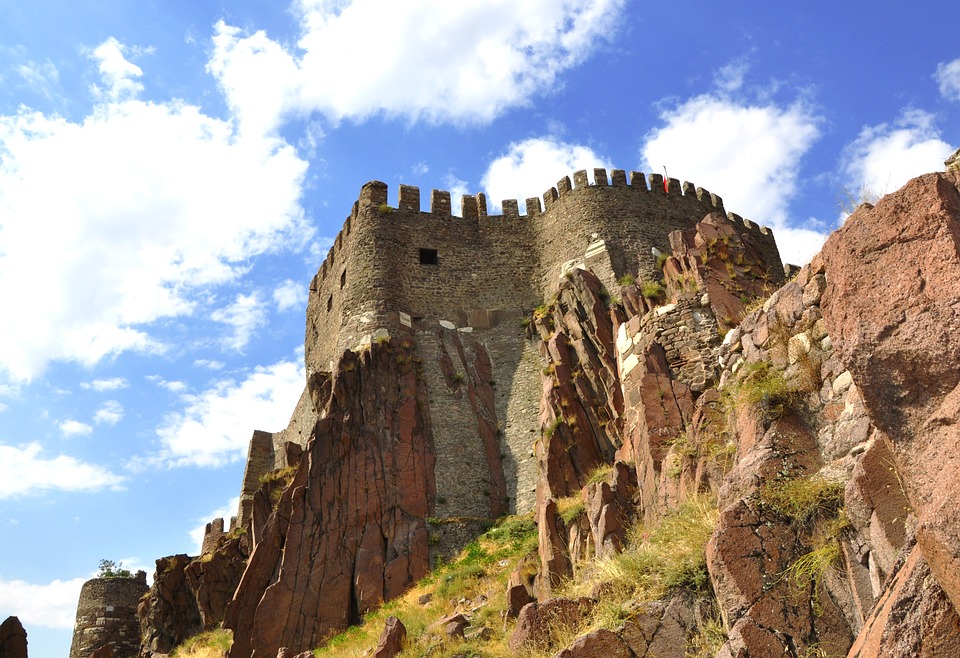
This castle is without a doubt, one of the top attractions to visit while in Turkey. Although the Ankara Castle’s exact date of construction is unknown, evidence suggests that this majestic monument has been around since 1600 BC.
Over the years, the castle has fallen into multiple hands, and they have each left their mark. The Romans, Byzantines, and Seljuks have all held this castle. Along with the Ottomans, of course.
Throughout its extensive history, it has come under attack more times than we can count. Drastic measures had to be taken during invasions in the 8th and 9th centuries. The castle fell into such a state of disrepair that Roman structures had to be used as building materials – you can still see them there to this very day, oddly coloured marble blocks, creating a patchwork of the castles southern wall.
This combination of cultures does not clash. On the contrary, it helps compliment Ankara Castle, giving it a genuinely unique feel.
Unlike with the Atatürk Mausoleum, a bit of a walk is required to reach this militaristic marvel. The view is well worth it though;
As with all great castles that have stood the test of time, Ankara Castle is constructed atop a particularly high hill. So high, in fact, that you can see most of Ankara from its summit.
You’ll want to visit Ankara Castle toward the end of your trip, so you can point out all the places you’ve visited. Flanking one side of the hill is the Ankara old town, with buildings made from mud and wood, topped off with red brick rooves. This is in the stark contrast to the other sides of the hill, with the bustling bazaars, and big modern buildings. Truly a sublime sight.
4. The Bosphorus Strait
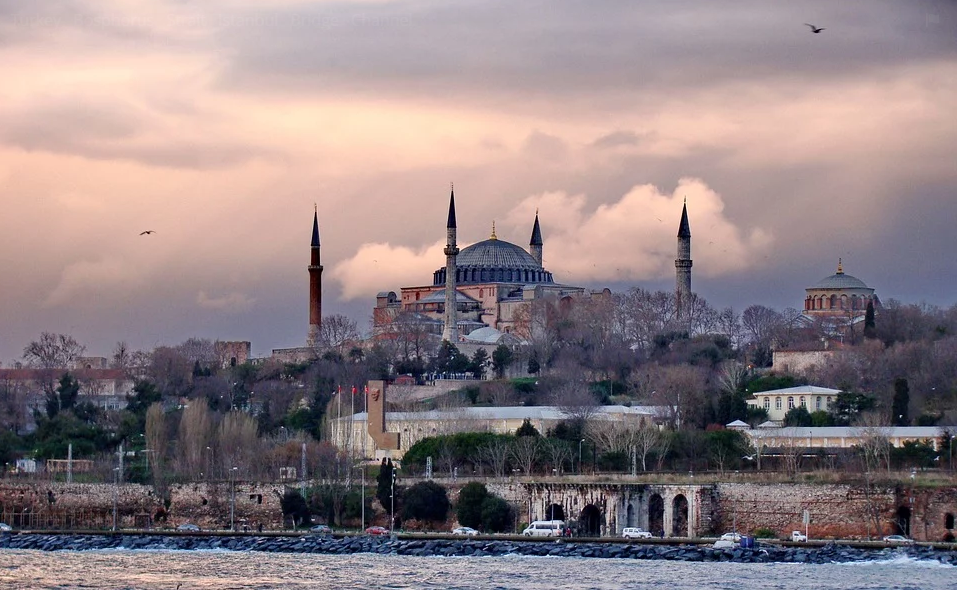
This natural strait connects the Black Sea and the Sea of Marmara, making it an invaluable trade route – a vital waterway, not just for Turkey, but for the entirety of Asia and Europe. It is regularly visited by people wishing to boast about having crossed the line that divides the Eastern and Western world.
The Bosphorus Strait is usually packed with tour boats and fishing boats alike, and for good reason. From the water, much of Istanbul can be seen.
Many summerhouses and buildings would take you all day to see on foot, but by hopping aboard a Bosphorus cruise, you can take it in at your leisure.
You’ll even spot the Topkapi Palace and other landmarks as you sail beneath giant bridges, and through the heart of Istanbul.
3. Blue Mosque
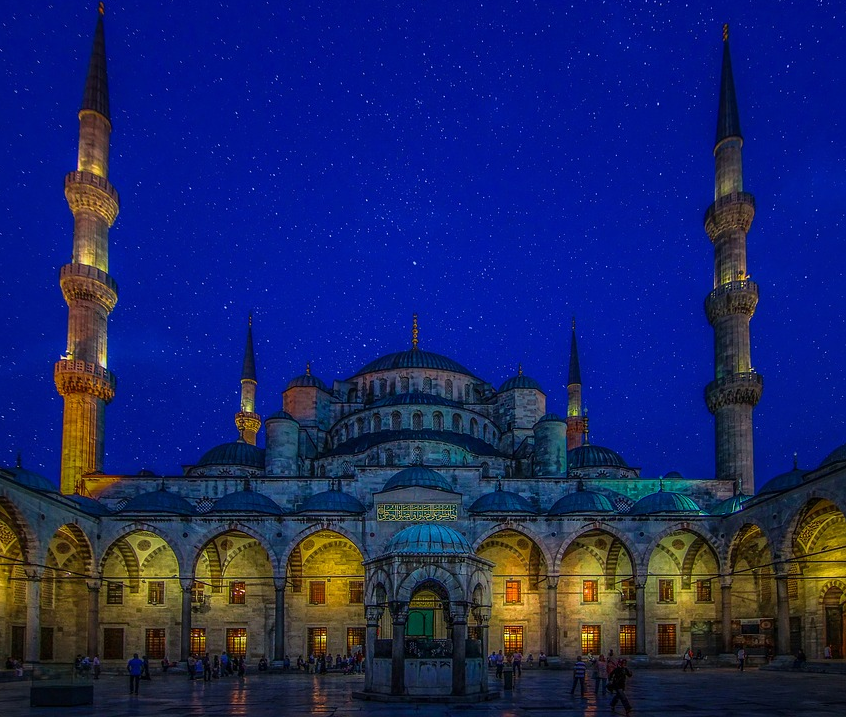
This holy site has been dubbed “The Blue Mosque” by foreigners, due to the many blue tiles that cover the interior of the dome. Even if it doesn’t contain as much blue as you were hoping for, there’s still plenty of cultural value to be gained.
Originally constructed in 1609, the Blue Mosque contains the tomb of its founder. It wasn’t just a mausoleum though.
The Blue Mosque had multiple purposes, one of which was sheltering travelers beneath its sapphire dome. Of course, its main purpose was – and continues to be – a place of worship.
Being a place of worship, there is something that you should take into account when paying it a visit: It is closed to non-worshippers during prayer times.
Appropriate dress wear is also of vital importance. You don’t have to cover yourself in a full burka, but ensure that arms and legs are concealed. If you are a lady, you will be asked to cover your hair in a headscarf. These are handed out, free of charge.
Admission is also free, however, we strongly recommend donating if you enjoy the experience, as it helps to maintain the Mosque.
Inside the Mosque itself, the atmosphere feels like an ancient library. People speak in hushed tones, and take great care when moving about. Even breathing can feel oddly obtrusive.
We recommend following suit and not being disruptive. Some visitors report having their picture taken while praying, and with the flash on, no less.
Not that we’re suggesting that you would do such a thing. We simply want to make it clear that the sense of peace and tranquility must be preserved. Except for during the calls to prayer of course. That’s a different matter entirely.
Some of the best muezzins in Turkey can be heard calling out on the microphone, encouraging all believers to come and worship. The call is a hauntingly beautiful song, and not to mention; thunderously loud. So loud, in fact, that extended exposure to it could cause permanent hearing damage.
Fortunately, the call to prayer does not last nearly as long as would be necessary to cause any harm. In fact, it tends to be the sound that tourists miss most after returning home.
2. Pamukkale

Solid snowbanks, the scorching Turkish sun floating in a sea of blue above? No, not quite – although, we can see how you might mistake Pamukkale for an icy oasis.
In reality, Pamukkale is actually made out of Travertine. This calcium-rich material is born from within the earth. Hot streams surge outward, carrying calcium hydro carbonate, which hardens upon the soil.
The travertine trickles down the mouth of the mountain, settling in unusual formations, somewhat similar to how stalactites form. Pamukkale happens to be one of the largest sources of travertine in the world, and stepping into its pools is like siking into a warm bath.
Its high calcium content means that the pools’ water is often heralded for its healing properties. If you want real rejuvenation though, you’ll have to climb a little higher.
Cleopatra Pools
Those who traverse the travertines are rewarded with the Cleopatra Pools. It is believed that Cleopatra herself swam here as part of her daily beauty ritual.
Given the sheer amount of minerals packed into this pool, it comes as no surprise that it might lend your skin a healthy glow. There’s also a shaded area to lounge and cool down, along with a souvenir shop and a restaurant.
Once you’ve grabbed a bite to eat, you might be hungry for history. If so, be sure to visit Hierapolis.
As you might expect, a spa city was built around Pamukkale. However, the fact that it was constructed around 2200 years ago might come a bit of a shock.
Entry to Hierapolis – the ruins of this Roman spa city – is included in your ticket fee. While Pamukkale is a wonder of the natural world, Hierapolis is a wonder of the historical one.
1. Topkapi Palace
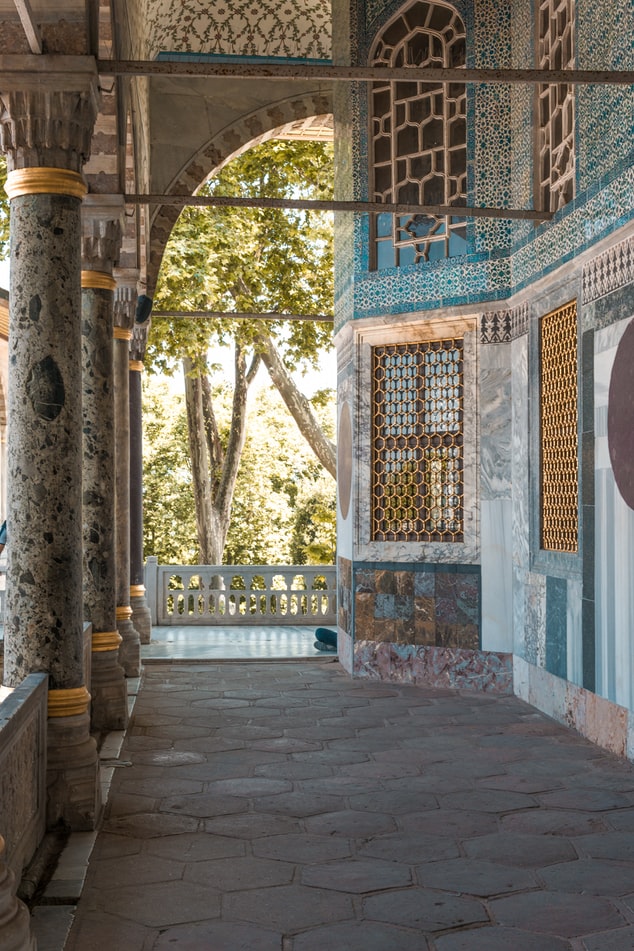
Finishing off our list of the top 10 attractions to visit In Turkey, we have the Topkapi Palace. This museum was once the seat of the Ottoman empire. Originally constructed in 1453, this splendid building has stood upon the coast of the Bosphorus ever since.
Its wonderful gardens are still lovingly maintained, and the architecture is to die for. That being said, it’s the artifacts on display that truly make this place worth a visit.
Saint John the Baptist’s arm and skull are both housed here, but there are plenty of Islamic relics too. The prophet Muhammad’s sword, bow, a lock of his hair, and his tooth, which is tucked away in a box. These artifacts are to Muslims what the Shroud of Turin is to the Christians. Valuable, beyond belief.
The outside of the building is stunning to be sure, but the further in you progress, the more of a dream-like quality it takes on. The walls are hewn from fine marble, and are coated with intricate gold detailing. From all the curls, swirls and stained glass windows, to the passages from the Koran chiseled into the walls, it can be hard for your eyes to settle on just one thing. Many people stand there for hours, voraciously taking in their wonderous surroundings.
It’s truly a time machine. Standing in the Harem, you can imagine the Queen mother, reclined on her sofa snapping orders at Eunuchs, or the Sultans wives all huddled together. If you’re in Istanbul, no, if you’re in Turkey, then you have to visit the Topkapi Palace.
Get Vaccinated Before Your Trip
Turkey is a breathtaking place to visit, but before you head over there, you should ensure you have the relevant required vaccines. Turkey is relatively free from most nasty diseases, however, there are several vaccines that we strongly recommend before you visit.
Being protected against Hepatitis A, B, Rabies and Typhoid will reduce the risk of having your holiday severely ruined. No one wants to be in the hospital when they could be in the sun.




